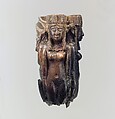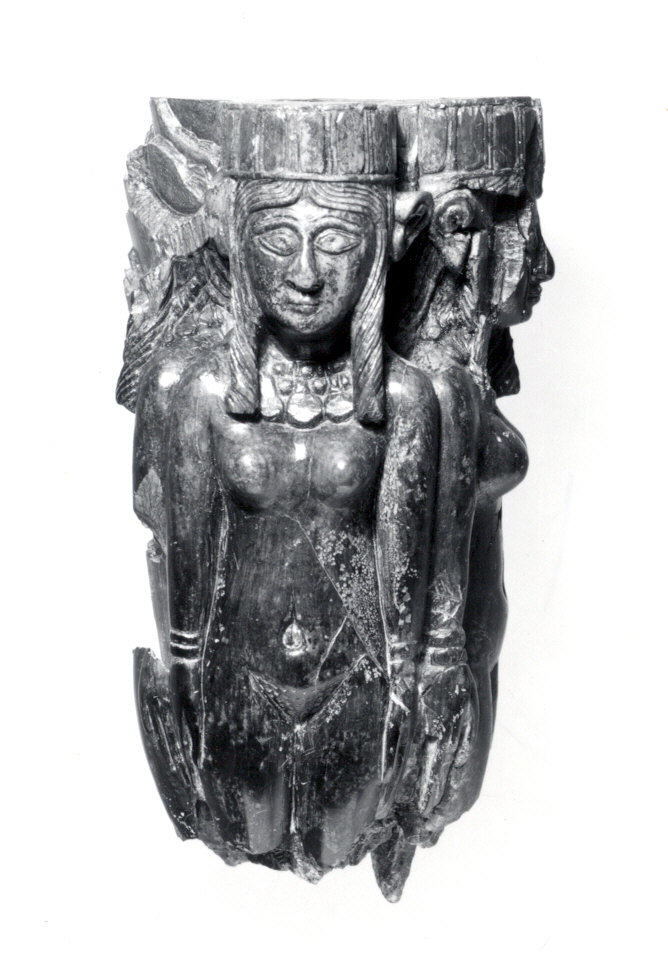Fan or fly-whisk handle in the form of four female figures
Not on view
Two ivories carved in the round showing nude and richly adorned female figures were found in the Throne Room of the Burnt Palace at Nimrud. The example in the Metropolitan Museum’s collection, which comprises four back to back figures originally overlaid with gold leaf, was blackened through exposure to fire when the palace was sacked during the final defeat of Assyria at the end of the seventh century B.C. This piece was probably used as the handle of a fan or fly-whisk. A hole drilled into the top suggests that an attachment was originally slotted into it and secured by a dowel. Several elements are characteristic of North Syrian ivories, including the arresting frontal gaze of the nude, elaborately adorned female figures, and their features: large eyes, small mouths, and receding chins. Each figure has an emphasized pubic triangle and wears a polos (a high, cylindrical crown), a choker-style necklace with pendants, and two bracelets on each wrist.
Built by the Assyrian king Ashurnasirpal II, the palaces and storerooms of Nimrud housed thousands of pieces of carved ivory. Most of the ivories served as furniture inlays or small precious objects such as boxes. While some of them were carved in the same style as the large Assyrian reliefs lining the walls of the Northwest Palace, the majority of the ivories display images and styles related to the arts of North Syria and the Phoenician city-states. Phoenician style ivories are distinguished by their use of imagery related to Egyptian art, such as sphinxes and figures wearing pharaonic crowns, and the use of elaborate carving techniques such as openwork and colored glass inlay. North Syrian style ivories tend to depict stockier figures in more dynamic compositions, carved as solid plaques with fewer added decorative elements. However, some pieces do not fit easily into any of these three styles. Most of the ivories were probably collected by the Assyrian kings as tribute from vassal states, and as booty from conquered enemies, while some may have been manufactured in workshops at Nimrud. The ivory tusks that provided the raw material for these objects were almost certainly from African elephants, imported from lands south of Egypt, although elephants did inhabit several river valleys in Syria until they were hunted to extinction by the end of the eighth century B.C.
Due to rights restrictions, this image cannot be enlarged, viewed at full screen, or downloaded.
This artwork is meant to be viewed from right to left. Scroll left to view more.



